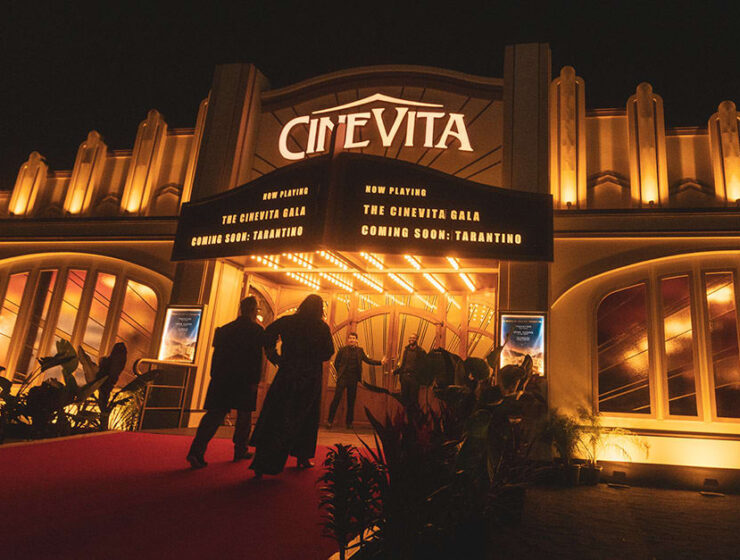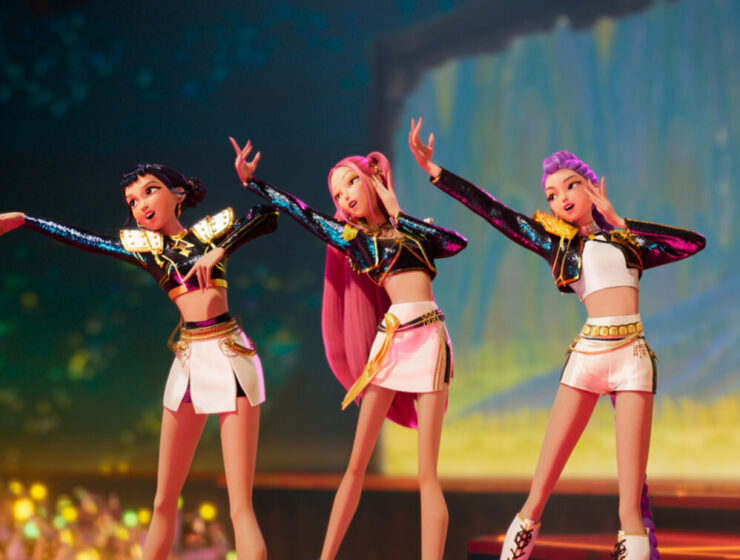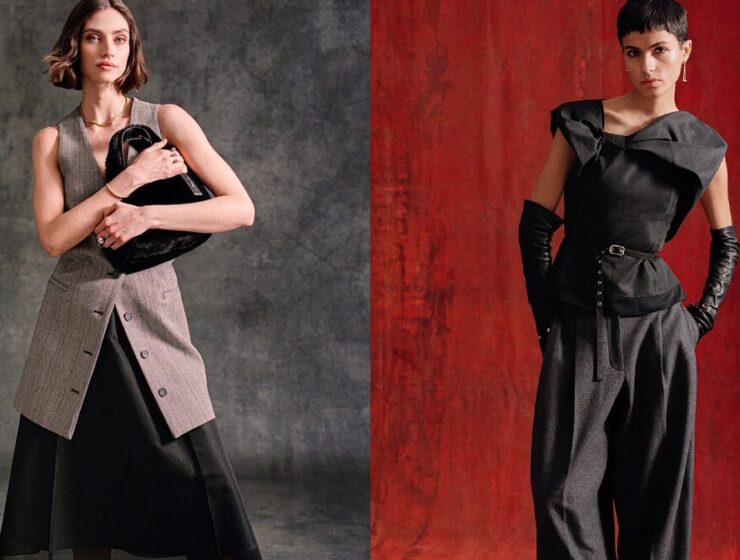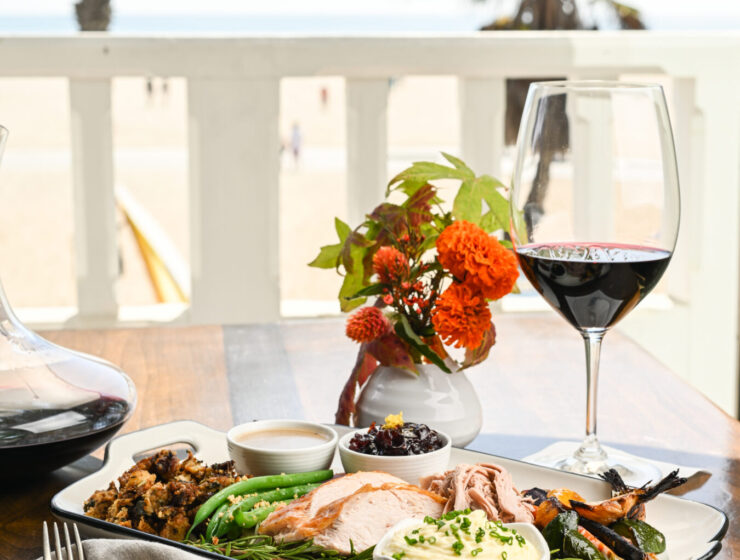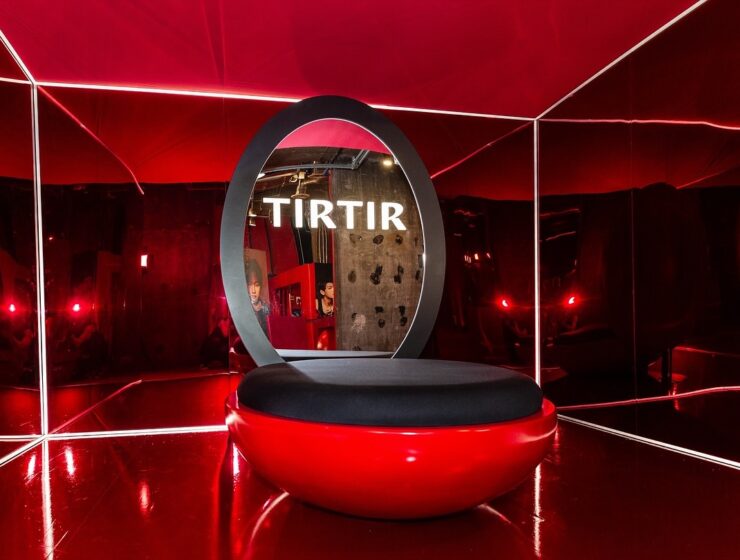Though its name suggests otherwise, Bare is anything but dainty. From its bestselling 7 Days hammered ring sets to its bold bronze nesting collar, the fine jewelry line crafts statement adornments that channel nature's simplicity — so it was about time that Saks recently snapped up Los Angeles-based designer Jeet Sohal's 14k gold and silver creations.
"I can't believe that I've been making them for almost 15 years," Sohal tells us of Bare, which has been a staple among luxury accoutrement aficionados (including stars like Jessica Alba, Charlize Theron, and Beyoncé, to name a few) since she founded the brand in 2003. The label's name is an acronym which stands for beautiful, authentic, refined, and enigmatic — and these worldly elements are represented in pieces like the bestselling Flight earrings ($245) and Flutter earrings ($989), the Stacked Pebble necklace ($360), and her signature constellation necklaces and studs ($675 to $8125).
Speaking of the stars, Sohal's galactic-inspired designs are now officially protected by the U.S.P.T.O.: the designer just patented her oft-imitated family constellation concept, a personalized design made up of overlapping constellations to represent Zodiac signs close to the wearer's heart. (In addition to jewelry, Sohal also designs bags made from Belgian linen and Italian leather.)

Ahead of her brand's 14th anniversary later this year, we sat down with Sohal to find out how her career path almost led her to working for the law, how National Geographic inspired the birth of Bare, and more.
What were you doing before founding Bare, and how was the brand born?
I started out my professional career as an associate at LEK Consulting, a strategy consulting firm headquartered in London. After spending two years with them, I was en route to law school when I serendipitously landed my first jewelry account. A specialty boutique owner bought a pair of earrings I had fabricated while I was out shopping with my mom. I had set up a bench under a skylight in my parent's attic, and that is where Bare collection was born.
What was the first Bare piece that you designed?
My parent's attic is a magical place where workbench tools live with old magazines, architectural plans, ski equipment, and beautiful coffee table books. When I set up my bench, I made myself a pair of earrings inspired by an old National Geographic that was perched on the work table up there. It was a picture of a woman who had modified her earlobes to look like gigantic water droplets.
The effect was striking, but the image reminded me of the droopy earlobes that elder Indian women have from decades of heavy gold jewelry adornment. I blended the visual inspiration of the water droplets and my desire to not actually have droopy earlobes and fabricated featherweight 14K nested teardrop earrings. Paper thin, but large and voluminous!

Can you tell us more about your decision to patent your family constellation concept, and did your biotech experience influence the move?
I'm sure that my biotech experience played a role, but it was more the 14 years I've spent as a designer. Design does not happen in a vacuum and many designers have similar products that debut at the same time. That being said, when a larger designer or retailer starts selling a unique product [that looks similar to what] you have made for 10 years, it hurts emotionally and financially.
Now, if someone does that with the family constellation, I've got recourse that's pretty black and white. I can have that designer or retailer license the idea from me, or I have legal recourse to recover money from them which is something that happens in the biotech space all of the time.
How have your experiences in the biotech industry inspired your designs?
I think my experience as a consultant informed my business sensibility. I've never considered how that experience inspired my design sensibility until [now]. I think that working in a corporate environment allows me to understand how jewelry lives in multiple settings. I would like to think that Bare collection pieces are as comfortable and visually compelling in the boardroom as on the beach.
Though your pieces are regularly worn on celebrities, can you recall how you felt when you scored your first star sighting?
It's been so long since I started out. I'm not sure that I remember the first celebrity sighting, but I do remember when Liv Tyler's stylist at the time of Lord of the Rings called me for jewelry that she had used in a Seventeen magazine shoot for Liv Tyler's press tour. I was elated and bursting with pride!
What's your favorite piece that you've designed so far and why?
I wish I could pinpoint a favorite. I think that the most compelling piece of jewelry I've designed is the family constellation, which I've patented. It's very rare to truly invent something in the jewelry space. Most of design is a dialog between history, culture, current trends, and benchwork innovation. The family constellation is incredibly personal, similar to nameplate or engraved jewelry, but very private.

Why is it important to you to manufacture locally?
There is almost nothing more important to me than having physical control over the manufacturing process. Whatever we do not fabricate in house, we do domestically. I love the idea of supporting our country's jewelry heritage and the jewelers that are still in the business. A few years back, I was considering doing some production overseas and then I had a car driver [who took me from] Boston to Providence, Rhode Island [and] who had been a master engraver who was now full-time driver because his workshop folded during the recession.
When he showed me his work on his smartphone, it was like stepping into the Buccellati factory in Italy! Although I'm a small business and the effects of manufacturing domestically are difficult to absorb financially, I firmly believe that we need to support the craftsmen in our communities so that people continue to pass along their skills. Without skilled craftsmen, we would have zero design flexibility. Plus, manufacturing locally affords Bare its distinctive beauty.
Where do you go in Los Angeles to find inspiration?
Creative inspiration comes from everywhere! Generally, I see a shape or negative space in nature, sculptures, etc that gets me going. I love walking around neighborhoods and seeing all the different Angelenos and the jewelry style. The Downtown library is amazing for a rainy afternoon when I need to really do a deep dive into a project or concept I'm developing. Their selection of design books is insane.

